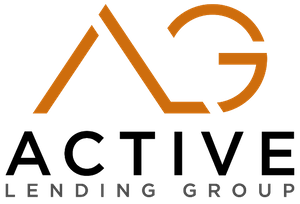Reverse mortgages often get a bad reputation. Many people assume they are a last resort for those struggling financially. But that’s far from the truth. When used correctly, a reverse mortgage can be a valuable tool for retirees looking to maximize their financial flexibility while preserving their assets.
I recently had the pleasure of sitting down with my father, Pete Nyiri, on an episode of my podcast. Pete has been a real estate broker for over five decades, and he shared his personal experience with a reverse mortgage. His insights offer a fresh perspective on how this financial strategy can be a game-changer in retirement.
Reverse Mortgages: A Powerful Yet Misunderstood Retirement Strategy
Those who take the time to learn about reverse mortgages—like my dad—discover that they can be a smart way to access home equity without giving up financial security. Let’s break it down.
Overcoming the Stigma Around Reverse Mortgages
Many retirees hesitate when they hear the words “reverse mortgage”. They’ve heard stories about people losing their homes or getting into financial trouble. However, the reality is that today’s reverse mortgages are highly regulated and designed to protect homeowners.
These financing options aren’t just for those in financial distress. In fact, wealthy individuals are using them to enhance their retirement strategy.
Why? Because they provide financial freedom while keeping investments and other assets intact.
Pete’s Personal Experience with a Reverse Mortgage
At first, my dad was skeptical. He had spent decades in real estate and remembered when reverse mortgages weren’t as desirable. However, after hearing me discuss new programs and benefits, he realized they might be worth considering.
He ultimately chose a reverse mortgage line of credit. His goal wasn’t to get a large sum of money—his home was already paid off, and he had other investments. Instead, he wanted financial flexibility without triggering unnecessary taxes or depleting his assets.
With the line of credit, he could pull money when needed and even put it back if he didn’t use it.
How a Reverse Mortgage Works
A reverse mortgage allows homeowners to borrow against their home equity without having to make monthly mortgage payments. The loan is repaid when the homeowner sells, moves, or passes away.
The amount available depends on the homeowner’s age, the home’s value, and the specific loan type. Interest accrues over time, but since home values tend to appreciate, the increase in equity can help offset costs.
The Key Benefits of Reverse Mortgages
One of the biggest advantages of a reverse mortgage is flexibility. It allows retirees to access funds without selling investments or taking taxable withdrawals. Here are some of the main benefits:
- Preserve Retirement Investments: Instead of pulling money from IRAs or stocks, homeowners can use their home equity, allowing their other assets to continue growing.
- Minimize Taxes: A reverse mortgage isn’t considered taxable income, so it won’t push retirees into a higher tax bracket.
- Financial Flexibility: Funds can be used for anything—home renovations, medical expenses, travel, or even helping family members.
- Spousal Protection: If one spouse passes away, the surviving partner can stay in the home without needing to repay the loan immediately.
The Growth Potential of a Reverse Mortgage Line of Credit
One feature that many people don’t realize is that a reverse mortgage line of credit can grow over time. If home values increase, borrowers may be able to access even more funds.
This makes it a dynamic financial tool that can adapt to changing needs.
Using a Reverse Mortgage to Purchase a New Home
Reverse mortgages aren’t just for staying in your current home. They can also be used to buy a home. Retirees who want to downsize or move closer to family can use a reverse mortgage to finance a new home while keeping more cash on hand.
Financial advisors often recommend this strategy instead of paying cash outright for a home. It preserves liquidity while allowing retirees to live comfortably in their ideal location.
Education and Counseling: A Crucial Step in the Process
A reverse mortgage isn’t a decision to take lightly. That’s why the process includes mandatory third-party counseling. This ensures that homeowners fully understand the terms before moving forward.
Family involvement is also encouraged. In my dad’s case, we had open discussions about how a reverse mortgage would impact our family’s financial future. This transparency helped him feel confident in his decision.
Moreover, not all lenders and real estate professionals are knowledgeable about reverse mortgages. That’s why working with an expert is key.
I’m passionate about educating people on this topic, not just through my work, but also through my podcast. Real estate podcasting has been an incredible way to inform, connect, and continue learning from other industry experts.
Subscribe to Retirement Reimagined to Discover More Insightful Conversations on Retirement Living and Mortgages!
My dad’s experience shows that reverse mortgages are a valuable financial tool when used strategically. They aren’t for everyone, but for the right person, they provide freedom, security, and flexibility in retirement.
If you’re a retiree (or planning for retirement), it’s important to understand how to make your home equity work for you. Reverse mortgages aren’t just about accessing cash—they’re about maximizing financial stability while enjoying your golden years.
If this topic interests you, I encourage you to tune into Retirement Reimagined. I bring in expert guests and share insights to help you make informed decisions about your future.
And, if you’re wondering whether a reverse mortgage is right for you, let’s talk! My team at Active Lending Group specializes in helping retirees explore their options. Contact us today for expert guidance on retirement financing in California.
Live your best retirement—on your terms!


Recent Comments